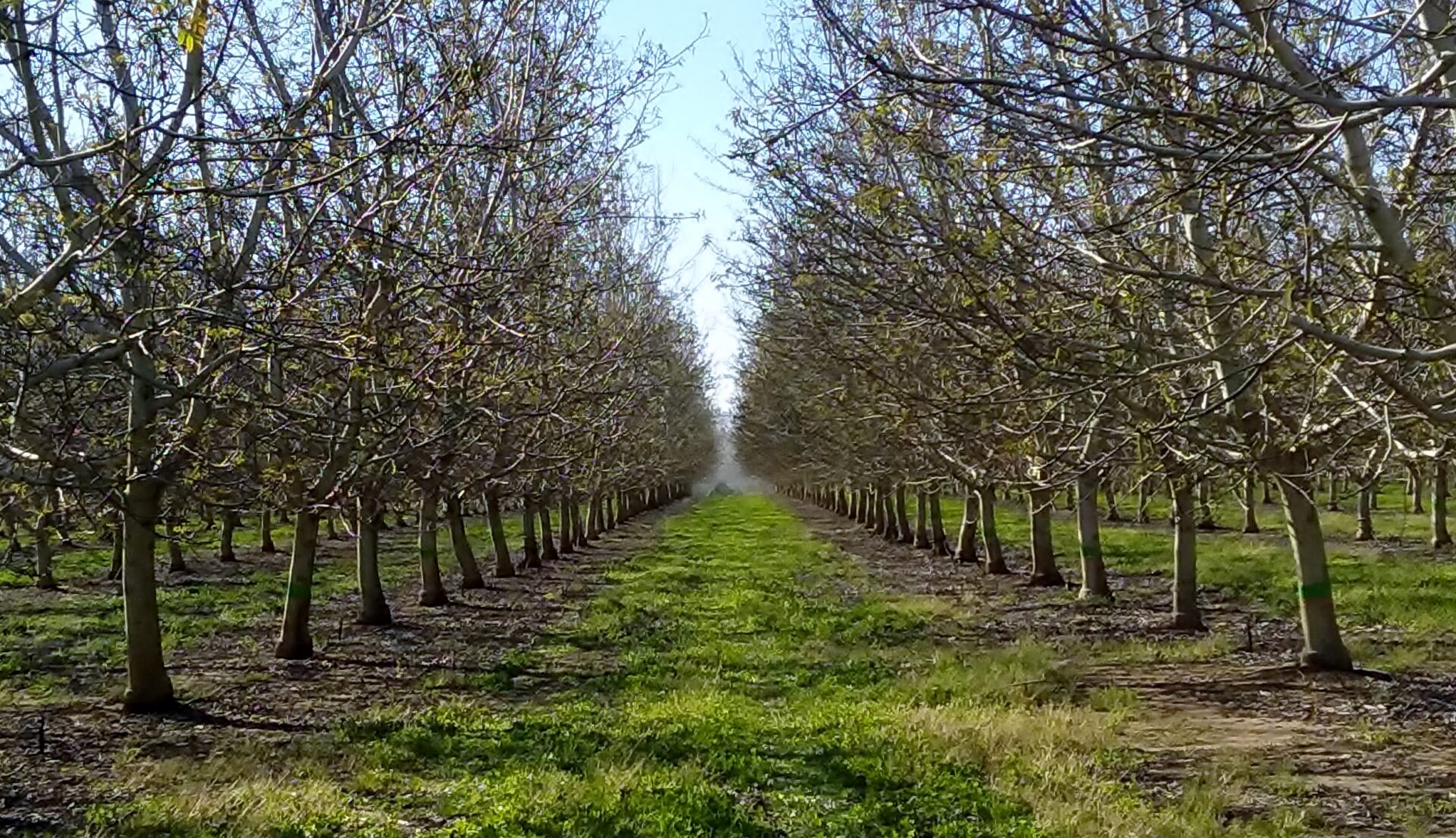There are many available techniques for scheduling irrigation in walnuts during the season, says Ken Shackel, Professor in the Department of Plant Sciences at UC Davis. These schedules are based on weather, soil measurements, plant measurements and “WYND – What your neighbor does.”
“But, how do you know when to start irrigating,” he asks.
The most proposed method of late for scheduling irrigation is Evapo-Transpiration (ET). But newer research suggests there may be better alternatives for determining when to start.
He explains that growers worry about two things–starting too late, and starting too early.
“Growers worry that if they wait too long, trees will use up the deep soil moisture and run out of their bank account at harvest,” Shackel said.
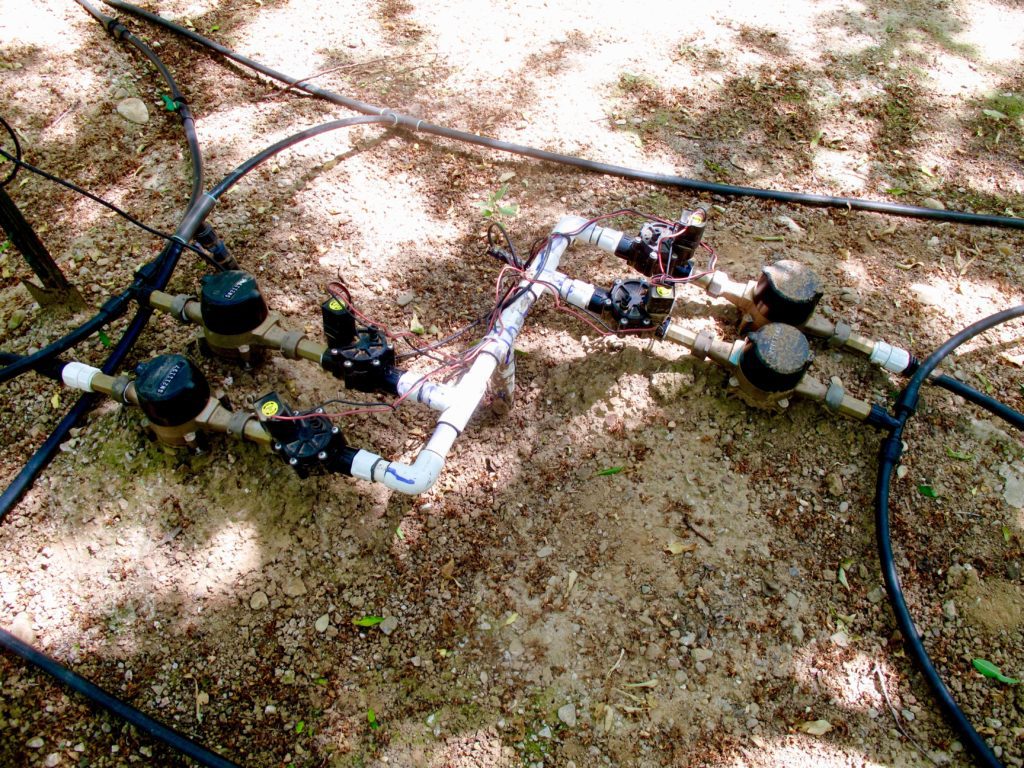
Is There a Downside to Starting Too Early?
Citing UC Integrated Orchard Walnut and Almond Specialist Bruce Lampinen, Shackel said, “Trees that are consistently too wet (above baseline stem water potential) in the spring can develop numerous symptoms later in the year, often mistaken for other disorders.”
Shackel said nobody should start irrigating if the soil is wet, but the question remains, “How does the tree feel?”
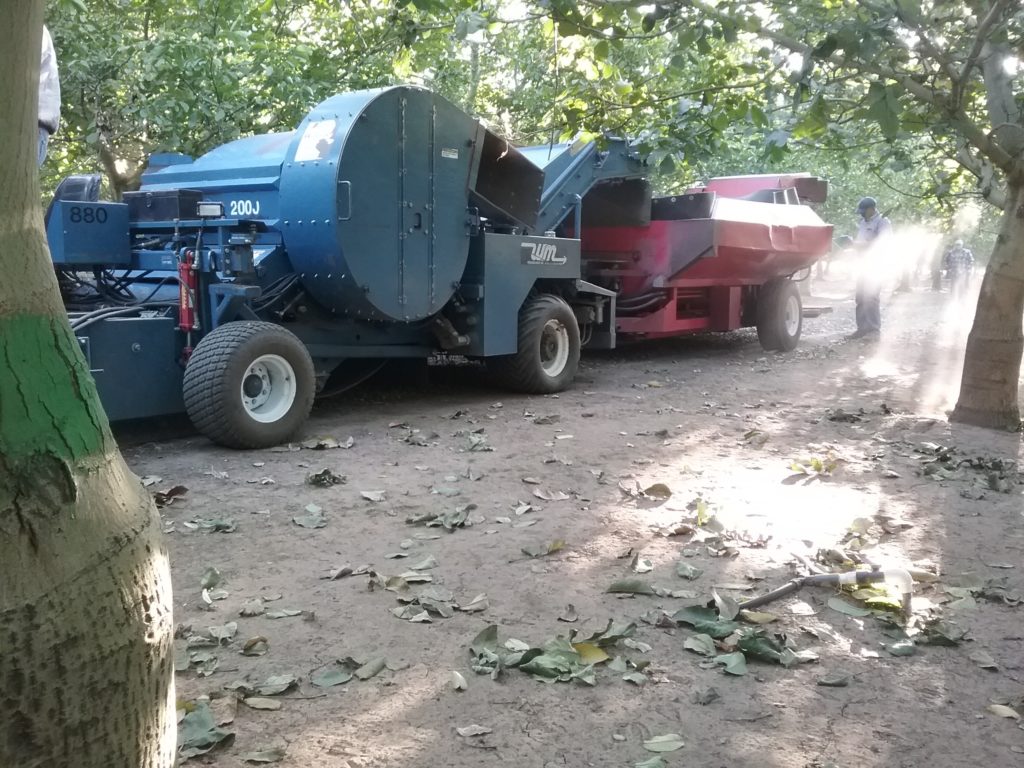
Early Season Water Management Project
A research team of Shackel, Allan Fulton, Lampinen, Kari Arnold, Nick Matsumoto, and Hal Crain and Jeff Phillips as cooperators, started a project in 2014 on early season water management. The experiment was conducted in five different treatments in five blocks (zones), totaling 25 independent treatments, in deep, well drained, sandy loam, silt loam soils in Tehama County at the Crain Walnut Ranch.
One objective of the project was to field test four levels of stem water potential (SWP) for the start of irrigation in the spring. That spring the team used a pressure chamber to measure SWP. Then they let the project site grower do whatever he wanted in terms of when to start irrigating, while the team waited to start irrigating until the trees were stressed, hitting 1, 2, 3, or 4 bars below baseline (fully irrigated) SWP value.
“The key grower concern was that they always saw a lot of water stress in their trees at harvest, a time when they had to stop watering so they could get in the orchards to harvest the crop,” Shackel said. “They were worried they weren’t putting on enough water.”
The grower started irrigating in mid-April that year. The researchers waited to start irrigating when the trees were two bars below baseline. That didn’t occur until around early to mid-June in different blocks. That year the grower’s irrigation was “by the book,” matching ET closely over the season. However, the orchards’ irrigation manager noticed that the research team’s trees “looked healthier at harvest,” they looked less stressed, even though the team started irrigating much later than the grower and put on less water, Shackel said.
“The next year, and for all the years after that, the grower started doing what the research team was doing and started irrigating his orchards later in the season,” he added. “The trees looked healthier, but what about the yield?”
In 2014 the research team’s trees looked healthier, but their crop yield was down somewhat compared to the grower’s.
“In the second year we again got a bit of a lower yield than that of the grower,” Shackel said. “ But they started catching up in the third and the fourth year was a big surprise when we actually got more yield in our trees. Then, after that the yields from the grower’s trees and our trees were pretty much the same. It was pretty much a wash economically, but the team’s trees looked healthier.”
The Tehama County experiment was designed to test whether delaying irrigation in the spring was a good idea to avoid over-irrigation problems, or a bad idea that would cause water stress problems around harvest.
“It is definitely not a bad idea on this soil in this location, in fact, trees in all delay treatments were less stressed around harvest,” Shackel said. “There is evidence that mild to moderate stress is associated with higher nut load and quality in economic terms.”
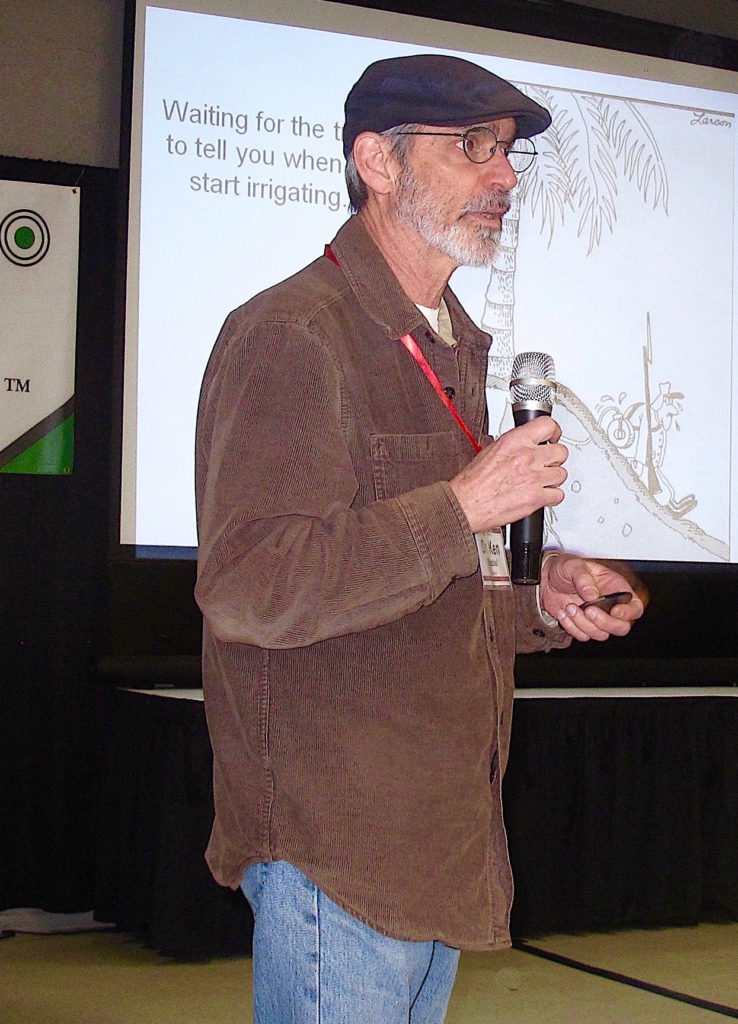
Newer Trials Underway
Based on the finding from the Tehama County project, the research team initiated a new trial in 2018 on a heavier soil in a commercial walnut orchard in Patterson, California. The four-year-old Chandler/Vlach orchard with 15-by-24 foot spacing, 120 trees per acre, was in a clay loam soil.
“This new trial is a very interesting situation,” Shackel said.
Historically, the grower was using soil water readings to guide irrigation, keeping the 18-inch-deep sensor from getting too dry and irrigating longer to wet the 36-inch-deep sensor if it showed progressive drying.
“The usual idea is that the shallow soil is going to get dry and wet as you irrigate, but that deep soil, if it starts drying out, if the sensor starts reading more and more tension, then sometimes you need to bump up your irrigation and get that water down deep. And that is exactly what the grower had been doing for years at this site,” Shackel added.
The grower’s soil moisture readings showed a lot of dryness in August to October, even though it appeared he was always at or above SWP baseline.
The research team conducted their delayed irrigation, starting water in early June when SWP was two bars below baseline. Both the grower and team delivered less irrigation that year than was normally applied following the ET calculations. In 2019 the team added another demonstration plot, this one in Corning, Calif., again a grower versus delayed start.
Comparing the crop yields at both sites, grower versus delay, Shackel reported that at the Patterson site, the grower yield was higher, but also a much higher canopy shaded area, so possibly a local difference in tree size. However, there was a higher yield per canopy shaded area in the delay block. In Corning, with an almost identical canopy shaded area in the grower and delay blocks, the higher yield went to the delay block.
“There was no statistical differences at either site,” Shackel said, “which was consistent with the Tehama site.”
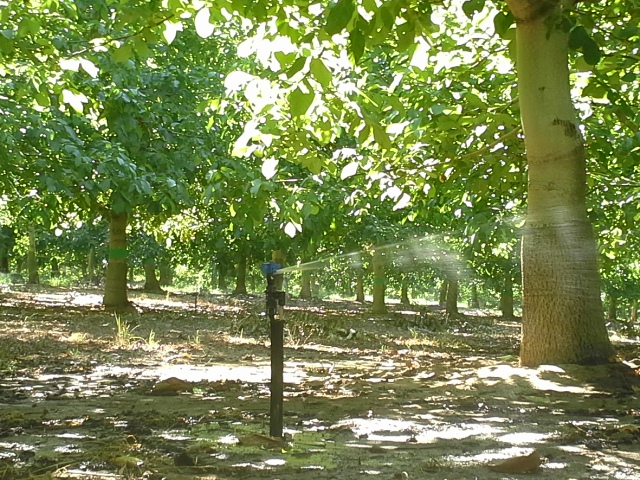
Delayed Irrigation Based on Stem Water Potential
Shackel said so far the research team has learned to date that a plant-based irrigation delay strategy appears to be working similarly in two contrasting soil types – the deep, well-drained sandy-loam/silt-loam in Tehama, and a heavier clay-loam in Patterson. The water savings is substantial, and even if the cost of water is not a significant factor, monitoring SWP to delay the start of irrigation may pay for itself in lower costs for irrigation system operation, “not to mention the possibility for improved tree and root system health,” according to Shackel.
He said mild water stress is associated with benefits to nut quality, small decreases in nut weight, and higher crop load.
“We have not yet found the ‘sweet spot’ for optimal water management in walnuts, but all indications are that it will not be as simple as applying a given percentage of ET,” Shackel added.
“This is a good argument that maybe the ET approach to irrigation scheduling is not the best approach – might cause you to start too soon, because if you don’t match ET you worry about it; and it may be that walnuts, because they have deep roots, have access to a lot of water that you may not know about.”
However, he noted, irrigation practices may depend on the particulars of the orchard’s site, such as the Patterson test site where they applied only 35 percent of ET and still had the highest amounts of tree wetness (SWP) of all the sites in the project.







